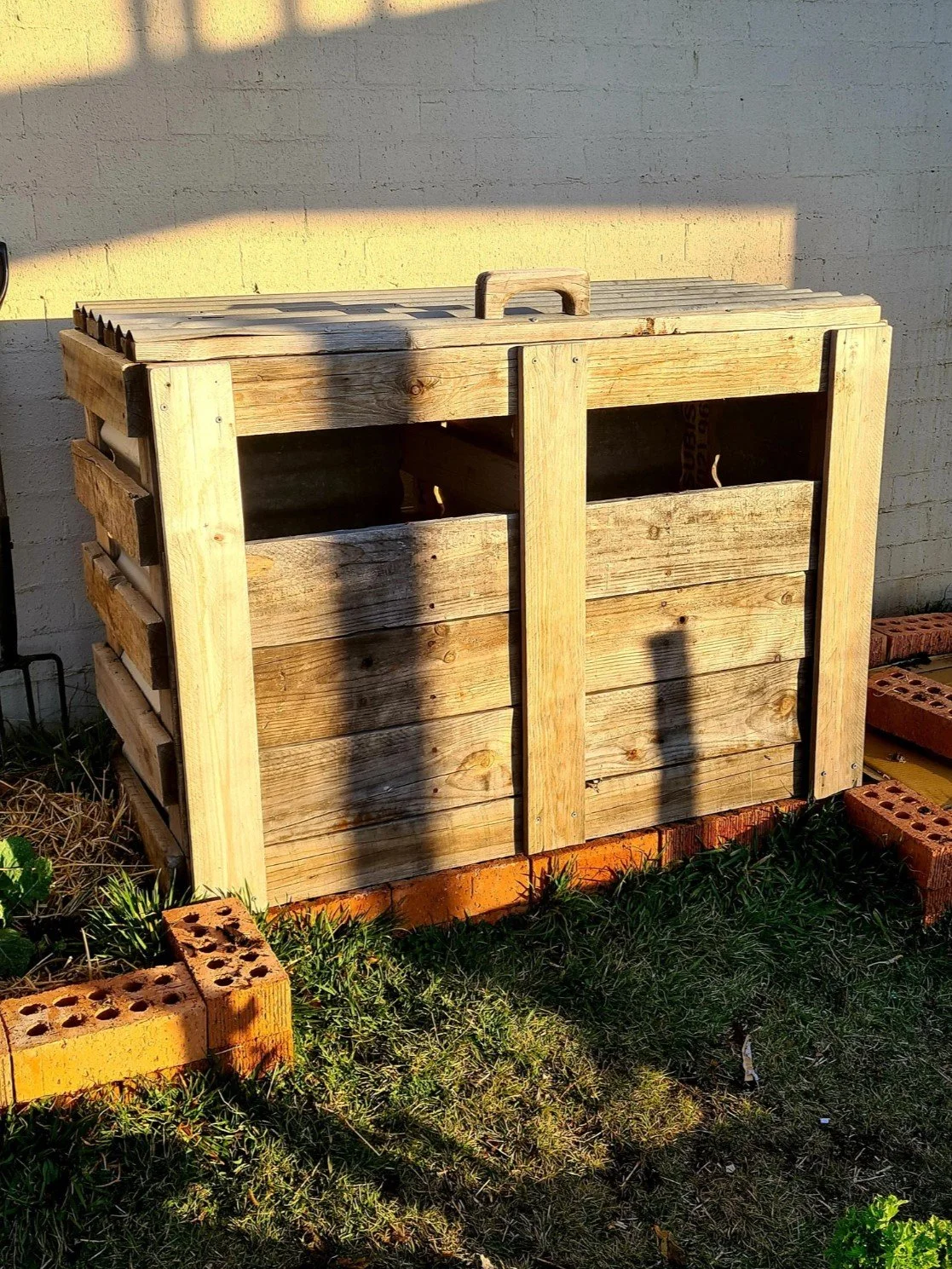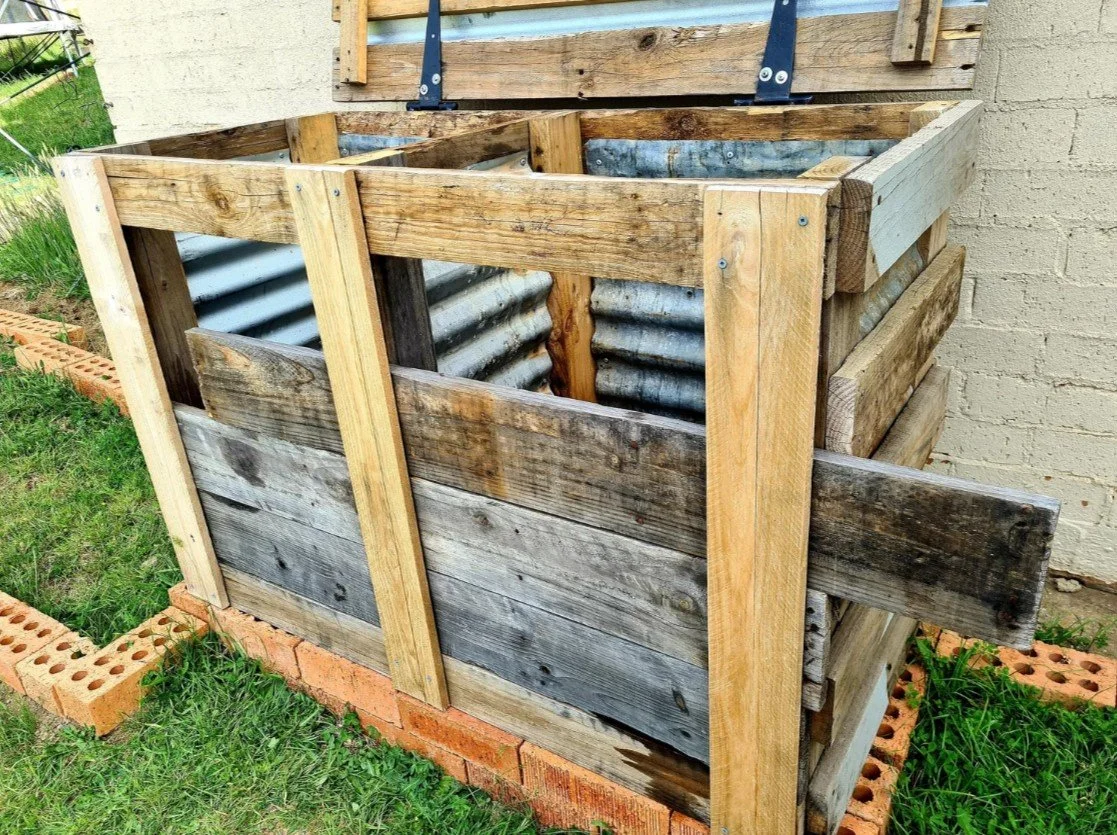Get Composting!
Cold compost, hot compost, compost towers, worm farms; however you do it, composting is one of the most effective things you can do for your soil and the environment.
Compost and vermicast (worm castings) deliver outstanding benefits: healthier plants, nutrient-dense soils, improved soil structure, greater water-holding capacity, increased carbon drawdown, and food for the soil microbiome. A bonus when you make it yourself: it doesn’t come wrapped in thick, non-recyclable plastic that’s been sitting at a garden centre for months.
Better for your soil. Better for the planet.
Why Composting Matters
Around 30% of household waste is food waste. When organic material goes to landfill, it breaks down without oxygen (anaerobically), producing methane, a potent greenhouse gas. Composting keeps organic waste out of landfill, significantly reducing emissions while turning “waste” into a valuable soil resource.
Need a Hand Getting Started?
If you’d prefer a more hands-on approach, Create Ecology can help. We work with businesses, schools, and councils to:
Choose the most suitable composting method (including worm farming)
Select or design compost bins (including custom-built systems)
Identify the best site location
Provide clear guidance on setup and ongoing management
Ongoing support and troubleshooting are also available, because composting really is easier than some people make it out to be.
Composting Basics (In a Nutshell)
Aim for a 50:50 balance of brown and green material (carbon to nitrogen), then adjust as you go:
Too wet or smelly? Add more brown.
Too dry? Add more green, or a light spray of water.
Layer materials like a lasagne to encourage airflow and breakdown.
Brown materials: dried leaves, shredded newspaper, cardboard, small sticks
Green materials: kitchen scraps, lawn clippings, fresh garden waste
If you have a large lawn and a small compost bin, avoid dumping all your clippings into a cold compost; this type of material is better suited to hot composting.
Hot Composting
Built all at once (layered carbon and nitrogen)
Requires a large pile (minimum 1 m³; up to 2 m³ in cold climates like the Snowy Mountains)
Needs regular turning and moisture management
Why go hot?
Reaches ~55°C for at least 3 days. Decomposes faster than the cold method.
Breaks down pathogens (from cooked food, meat, and dairy)
Destroys weed seeds
Important: Hot compost piles can combust if poorly managed. It is important to monitor temperature and turn regularly.
Cold Composting
Materials are added gradually
Smaller, more manageable piles
Requires frequent turning to maintain oxygen (aerobic conditions)
Cold piles may warm up, but generally won’t reach pathogen-killing temperatures. For this reason, avoid adding cooked food, meat, or dairy.
We recommend running at least two compost piles for this method:
One active pile receiving new material
One resting pile, which is not receiving new material and is in the decomposition stage.
Common Compost Questions
Onions & citrus
These get a lot of attention - moderation is key.
Got a one-off batch of citrus or onion? Go for it, add them to the pile.
Processing huge quantities all at once? Better to spread additions over time (especially in cold compost).
Pet waste
Do not compost pet waste. Consider alternatives such as dedicated biogas systems.
If something goes wrong…
A smelly pile, lots of flies, or slow breakdown usually means the balance is off. These issues are easy to fix, and we’re always happy to help troubleshoot.
Composting is one of the simplest ways to reduce waste, cut emissions, and build healthier soils. Start small, don’t overthink it, and adjust as you learn.
If you’d like help setting up or improving your compost system, Create Ecology is here to help.
Custom double sided cold compost + worm farm + in-ground worm tower built from recycled materials.








